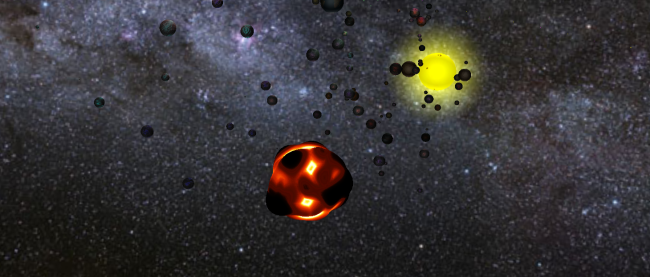Throughout my project I conducted various user testing, I had my peers use my project and view my textures and game elements. A couple of the most important changes I made from these tests were:
firstly my avatar shader, once I had all of my planet and comet textures in my scene, these tests made it apparent that the avatar graphic no longer fitted within my scene. So I created a new shader for my avatar that fit the scene a whole lot more:
Another aspect that was improved by my user testing was the starting movement speed the value started at 0.01 but with an increase to 0.015 it was much easier for new users to start off enjoying my game straight away. The comments said that even though it still wasn’t so easy to get used to the controls it was more fun because it wasn’t for lack of movement that it was hard, it was the more the users skill that held them back.

